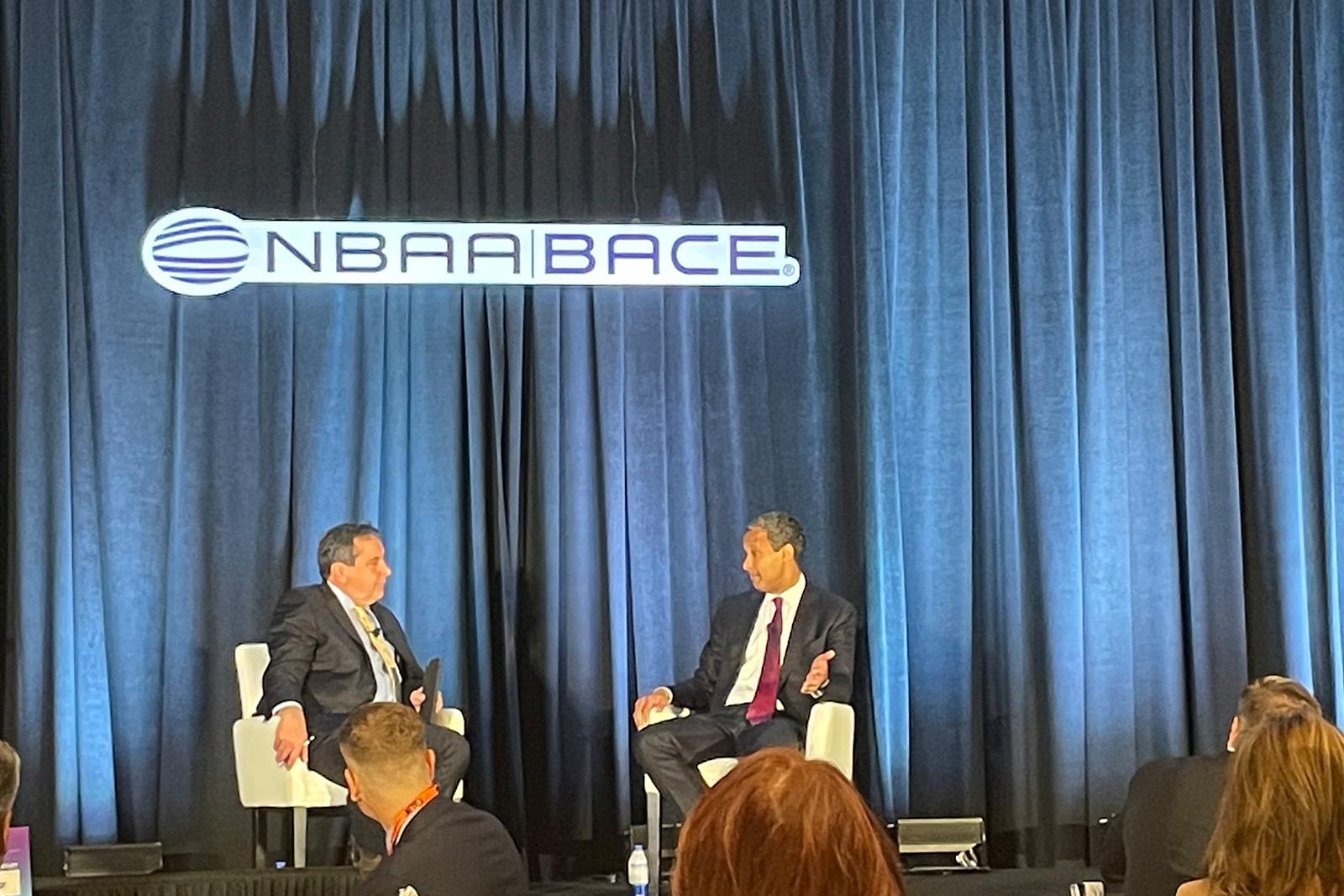
Aviation industry consultant Richard Aboulafia (left) with Boeing Chief Strategy Officer Marc Allen.
ORLANDO—While the exhibition floor for the NBAA Business Aviation Convention & Exhibition (NBAA-BACE) was still in its final stages of assembly, Boeing Chief Strategy Officer Marc Allen kicked things off in a preshow Newsmakers Breakfast by emphasizing that the ties between commercial and business aviation must become more collaborative to tackle the promising yet challenging future the greater aviation industry faces.
The issues that represented the most pressing concerns came down to three overarching categories: sustainability, cybersecurity, and talent acquisition.
Allen emphasized that just because commercial and business aviation traditionally operate independently of one another does not mean the two cannot cooperate. In fact, business aviation is well positioned to benefit from the trickle-down effects of commercial aviation, especially for the procurement of sustainable aviation fuel (SAF) and the industry’s goal for it to represent 10% of all aviation fuel usage by 2030.
“I actually think this one will start at the high end and work its way down,” Allen said. “Just the scale of economy: It’s a lot easier for scheduled airlines to have the scale necessary to make purchases for SAF, drive it into the system and create infrastructure around it [that] allows it to be deployed elsewhere. I expect that we will see SAF move at a much faster pace in aviation. Everyone has a stake in getting us to a place where by 2030, 10% of all fuel is SAF, which we think is a very ambitious but doable goal.”
But Allen added that a huge driver of sustainability will be the natural retirements of older, less-efficient aircraft, which are still heavily used in the business aviation sector. “By 2030 about half the airplanes that were flying in 2019 will be retired. And the new airplanes that backfill them will be the single largest improvement to emissions,” he said.
Continuing off the trickle-down theme, while airlines are making the biggest investments in cybersecurity for civil aircraft, Allen said business aviation has a “shared interest” in cyber defense, especially in the long term, as autonomous platforms debut. He called for more collaboration across the aviation industry.
“It requires sitting down and sharing at the table a little more than we’re probably used to doing with competitors,” Allen said. “That includes companies sharing their pain points and working together on how to fix weak links in cyber.”
Allen added that the U.S. government has been proactive engaging the defense industry base on cybersecurity. “That connects quickly into commercial aviation,” he noted. “But I think it probably doesn’t happen quite as fast or naturally in business aviation.”
Finally, addressing the workforce shortage, Allen contends that the problem is not a shortage of people, claiming that many people continue to love aviation. However, he pointed to the idea that aviation is not perceived as a “technology-first” industry. The mindset should be that aviation is a tech industry whose applicability can be touched tangibly, in a way ‘”tech first” companies such as Google or Facebook simply cannot offer. Changing that perception can allow greater interest by top talent.
